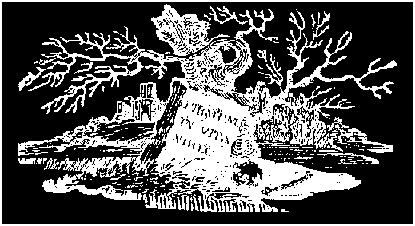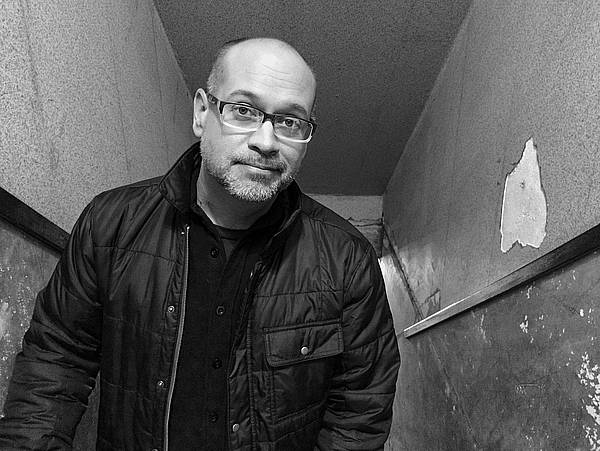On Suicide
The nettle nods, the wind bends over,
The man, he does not move,
The lover of the grave, the lover
That hanged himself for love.
we have reviewed almost three dozen books on suicide.
Here are fifteen of our favorites, including two representatives of
the many famous casualities - - - Sylvia Plath and Alan Turing.
You will also find here a couple of splendid reviews by
H. L. Mencken (the first and the last items below)
ending with an excerpt from the introduction to
the forthcoming book on disability
Life Amongst the Walkies.
Ruth Shonle Cavan
(The University of Chicago Press)
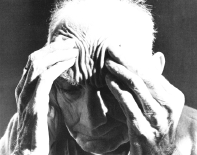
Fortunately for the gods who enjoy human misery, there are not many men so constituted. The great majority of us stick it out, hoping against hope, and sustained when even hope fails by curiosity. We must die in the end, but not just yet! Anon, anon! The morn may bring a check in the mail, or a better girl, or even the Presidency. It has happened in the past, and it may happen again. The doctors have been wrong before. But there is a kind of mind that believes them infallible, and hence sees no light ahead. It is a special type of mind, and if it is not downright pathological, then it is at least somewhat abnormal. Dr. Cavan shows, indeed, that most of the people who commit suicide do it for reasons that, to most of us, would seem trivial.
It is not the great calamities of life that take them off, but relatively small calamities. One man contemplates the bare bodkin because he is torn between his duty to his mother and his desire for his sweetheart - - - a conflict that rages, at some time or other, in the breasts of four men out of five, and to no more damage than is inflicted by a severe Katzenjammer. Another kills himself because he yearns for the country, and is bound to the city by his wife and children. A woman slaughters her lover and herself because she fears that he is about to leave her, and that she'll never find another to match him. A young man leaps into the unknown at twenty-three because, having grown up under the impression that he is a genius, he has begun to have some doubt of it.
What dreadful silliness! What a stupendous lack of humor! I have known, in my time, and with intimacy, at least a dozen men who committed suicide, and I can't recall one who had a logically sound reason. They all threw up their hands in the face of difficulties that might have been cured by six quiet months in jail.
review
Pastoral Responses
Loren L. Townsend
Daniel G. Bagby, Editor
(Abingdon)
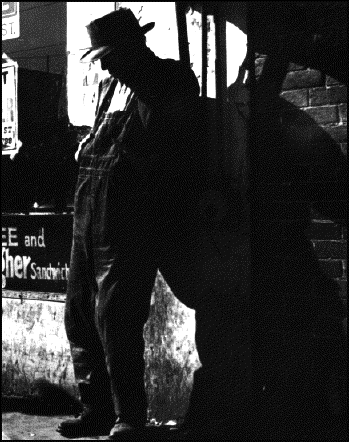
The author cites the fate of those who are not "part of the story." The dominant cultural story is white, employed, heterosexual. But "when some difference sets our story apart, we become marginalized and disenfranchised from the benefits offered by the dominant narrative."
Like Ralph Ellison's invisible man or Franz Kafka's prisoner, when survival demands that our own story be subjugated to socially privileged stories, humanity is sacrificed to various forms of madness. "In one study, psychiatrists found that nearly 70 percent of nonfatal suicide attempts (mostly women) were intended to frighten or manipulate others without intent to die. Patients in the study universally disagreed."
There is a moving quote from one of those who tried and failed:
- I'm not a daughter or a mother or a friend anymore. I am a "suicide risk," a new class of nonperson. People aren't with me; they watch me. They want answers I don't have, so they tell me what I felt and why I did what I did. I'm told my attempt was a power play in my marriage to get attention and manipulate. Like life and death are some kind of business deal. I'm told that I didn't really want to die because I didn't do it right the first time.
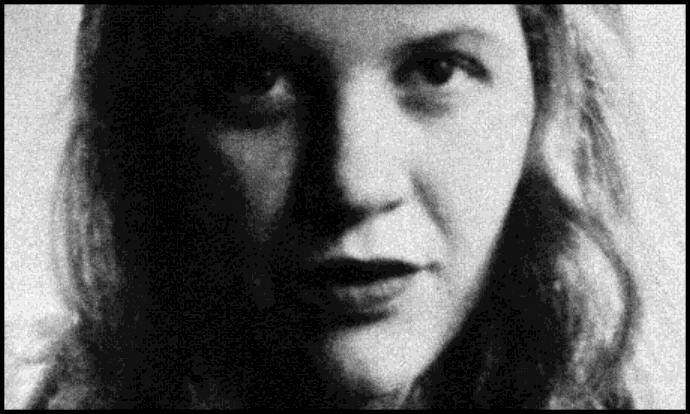
The book might serve as a manual on suicide. We learn the many different ways that Esther Greenwood - - - presumably a stand-in for Plath - - - toys with so many different ways to do it. Hanging herself. Disembowelling herself. Shooting herself. Cutting her wrists. Taking poison. Jumping off a building. Jumping off a bridge.When she goes swimming in the ocean, she tries to drown herself, but she keeps popping back up "like a cork." A gun? She always had trouble with mechanical things, thought she might blow it:
I'd already read in the papers about people who'd tried to shoot themselves, only they ended up shooting an important nerve and getting paralyzed, or blasting their face off, but being saved, by surgeons and a sort of miracle, from dying outright.
She buys a package of Gillette razor blades and fills the bathtub with warm water. "I thought it would be easy, lying in the tub and seeing the redness flower from my wrists," she writes. She starts to cut her wrists but stops because "the skin of my wrist looked so white and defenseless that I couldn't do it."
It was as if what I wanted to kill wasn't in that skin or the thin blue pulse that jumped under my thumb, but somewhere else, deeper, more secret, and a whole lot harder to get at.
Go to the full text of the
reviewThe Problem of
Death and Suicide
in Anorexia Nervosa
Mara Selvini PalazzollMany authors have stressed that anorexics have a strong self-destructive urge; thus Boss (1955) speaks of suicide in "refractive doses" when referring to those patients who, in their innermost selves, refuse absolutely to live as beings of flesh and blood. "They are totally lost to the therapist: using their own method right to the end they allow themselves to evaporate and dissolve."This highly suggestive interpretation of gradual suicide raises a number of questions. In the first place we must ask ourselves whether the desire for self-annihilation, the suicidal drive of these patients, is conscious, even though dissimulated, or unconscious. In the second place we must determine why, having discovered the apparently intolerable burdens of the flesh (the pressure of physical demands and the body's inevitable decay) they do not put an end to themselves there and then, instead of soldiering on at the price of atrocious sacrifices over many years. Let me try to answer these difficult questions by drawing on my own therapeutic experience.
Go to the full text of the
readingSuicide and
The Dark Dicemanand he it is hard believing to think that a love or a sorrow is a bond purchased without design and which matures willynilly and is recalled without warning to be replaced by whatever issue the gods happen to be floating at the time no you will not do that until you come to believe that even she was not quite worth despair perhapsand i i will never do that nobody knows what i know
and he i think youd better go on up to cambridge right away you might go up into maine for a month you can afford it if you are careful it might be a good thing watching pennies has healed more scars than jesus
and i suppose i realize what you believe i will realize up there next week or next month
and he then you will remember that for you to go to harvard has been your mothers dream since you were born and no compson has ever disappointed a lady
and I temporary it will be better for me for all of us
and he every man is the arbiter of his own virtues but let no man prescribe for another mans wellbeing
and i temporary
and he was the saddest word of all there is nothing else in the world its not despair until time its not even time until it was
Go to the full text of the
reading
The Dead Cat:
Schrödinger's ExperimentBardán became Secretary of the Central Confederation of Labor. People respected him, but he was not happy. In fact, he began to become violently depressed. Finally, he committed suicide two years ago. Or rather, as he feared, he committed suicide and survived his own death. He became two identical persons --- identical except one was dead, and the other alive. To cover this up, Bardán cremated his own body in a furnace at an abandoned factory. But he knew what had happened and was faced with his fate. His discovery had been fabulous. Its application was now irreversible --- he could not die.Bardán continued working for his country and its people, and living in a way that took account of his situation. But the awareness of his immortality took on a new significance for him. His point of view now changed. His urgency to create just social solutions diminished. His sympathy for the oppressed became more ambivalent. He could wait; but others could not. He was, in fact, condemned to wait for all eternity; while others had to struggle in the present. He lived in limbo; others lived in hell --- but one that would end.
The President offered Bardán the Department of Labor. He accepted. This acceptance unleashed a grave political crisis. His enemies tried to assassinate him. At 7:00 this evening, he was shot in a bar across from the dark and imposing San Carlos Cathedral. In the skirmish, various individuals were killed. Bardán both was and was not with them. His corpse is now being viewed inside the office of the Metallurgical Workers Union. But he is alive. In any case, this is certain: Marcos Bardán is not qualified to be the Secretary of Labor. He is not qualified to live as a human being. For these reasons, through this letter, Marcos Bardán presents his irrevocable resignation from the position of Secretary of Labor that he assumed this morning. By the time this letter is received, he will be out of the country, and living under an assumed name --- forever. Let the people understand.
Go to the full text of the
readingThree by
Marcus CafagñaI'm thinking tonight of the morning
Carla phoned from his farm in Michiganto say he was wearing the lipstick and wig
and sitting alone on the plastic red chairI gave him as mementos after my then-wife
had hanged herself. I doubt anyone wants to hearhis poem in praise of the slipknot,
or would see the sound of gunfireoutside my window in Fairmount Park
as a sign to read it. But here is a manwho even dolls himself up to teach literacy
to ex-cons, whose news that day was the glass pipehe'd quit. And though it hurts to think of Dianne's
silk scarf caressing his unshaven cheeks,a cornhusking impersonator
modeling my wife's Parisian splendor,I have to admire the man for washing
her white chenille and hanging it out to dry,the robe my dear one wore down each steep step toward a basement beam on the other side.
Go to the full text of the
three poemsSuicide and the
Emergency RoomAfter some hours in the emergency room, ingesting and regurgitating liquid charcoal, courtesy of the belching compressor, I was admitted to a regular room.My arms were strapped to the bed rails to prevent me from dislodging the I.V. lines. Although the stomach pump had been disconnected, the tube remained, dangling from my nose. When the day shift nurse came on duty I told her my name was Babar.
"Well, my name is Larene. You let me know if there's anything you need."
Larene's skin was coal-black, and she wore her hair in cornrows studded with beads that clicked.
"Can you take this tube out of my nose?"
Larene checked my chart. "I don't see any orders to have it removed."
My head ached, with my sinuses adhering to the tube. "I don't see the point of keeping it in. If you've pumped my stomach. If it's been pumped..."
Larene patted my hand. "Maybe they're planning to pump it some more. Maybe you put so much poison into your system they're just going to pump and pump for Lord knows how much longer."
Go to the full text of the
readingThe Death
Of HaidéeTwelve days and nights she wither'd thus; at last,
Without a groan, or sigh, or glance, to show
A parting pang, the spirit from her past:
And they who watch'd her nearest could not know
The very instant, till the change that cast
Her sweet face into shadow, dull and slow,
Glazed o'er her eyes --- the beautiful, the black ---
Oh! to possess such lustre --- and then lack!She died, but not alone; she held within
A second principle of life, which might
Have dawn'd a fair and sinless child of sin;
But closed its little being without light,
And went down to the grave unborn, wherein
Blossom and bough lie wither'd with one blight;
In vain the dews of Heaven descend above
The bleeding flower and blasted fruit of love.Thus lived --- thus died she; never more on her
Shall sorrow light, or shame. She was not made
Through years or moons the inner weight to bear,
Which colder hearts endure till they are laid
By age in earth: her days and pleasures were
Brief, but delightful --- such as had not staid
Long with her destiny; but she sleeps well
By the sea-shore, whereon she loved to dwell.
Go to the complete
reading
Making the Hillsides
Blossom with LightNathan B. Stubblefield. Defrauded by the promoters who wanted to take his loops and coils and Make Money. And Stubblefield was hurt wrenched torn by these animals from the city, these damned rascals. He went back home to his shack in 1913. And for fifteen years was barely seen. Sometimes the neighbors saw him "from a distance." For fifteen years, nothing, except:Some observers reported seeing mysterious lights MYSTERIOUS LIGHTS and hearing weird sounds WEIRD SOUNDS in the vicinity of Stubblefield's home.
Two weeks before his death, Stubblefield visited with a neighbor, Mrs. L. E. Owen. He asked her to write his story. He said,
"I've lived fifty years before my time. The past is nothing.
"I have perfected now the greatest invention the world has ever known. I've taken light from the air and the earth as I did with sound ... I want you to know about making a whole hillside blossom with light..."
Nathan B. Stubblefield. Locked in his shack. Starved to death. The man who took the Black Box and made words travel through the space around us. The man who created strange noises and weird lights. The man who would make a whole hillside blossom with light.
Nathan B. Stubblefield. Of Murray Kentucky. Dead at seventy. Of starvation, and too many visions.
Go to the complete
readingTuring
Pioneer of the Information Age
Jack Copeland
(Oxford University Press)This story is that in mid-1952, Turing spent a few nights with Arnold Murray, a 19-year-old unemployed man. When Turing's house was burgled the day after a tryst, Turing decided that Murray was responsible, and hauled him over to the neighborhood police station. In front of the police, Turing said that Oh yes, he and Murry had had sex. Dumb move, especially in the England still in the toils of late Victorianism.Turing was immediately arrested and charged with "gross indecency" under Section 11 of the Criminal Law Amendment Act 1885. After his conviction, he was offered the chance to go to jail or to undergo hormonal treatment designed to kill his libido. He accepted the option of treatment via injections of stilboestrol, a synthetic estrogen. This treatment was continued for the course of one year.
The story now is that the public revelation of his sexuality (and his shame) caused his suicide in 1954. For instance, an article in the Guardian reported that Turing "took his own life 55 years ago after being sentenced to chemical castration for being gay."
In an official apology from the government, the Prime Minister, Gordon Brown, said that
In 1952 Turing was convicted of "gross indecency" --- in effect, tried for being gay. His sentence --- and he was faced with the miserable choice of this or prison --- was chemical castration by a series of injections of female hormones. He took his own life just two years later.
His suicide weapon was thought to be an apple laced with cyanide.
However, author Copeland offers up a brief but vigorous demurral to all this, presenting facts that do not point to depression, angst, shame and suicide. Those who knew him in his last two years say that he "enjoyed life so much." "One of Turing's friends reported that he went through the "chemical castration" with what was described as "amused fortitude."
Go to the complete
reviewBlue Exits
[Excerpts]
Aaron SmithI think I would take pills.My doctor doesn't know
I don't take all the sedatives
he gives me - - -
I have a storehouse
of blue exits in my bathroom.If I had a garage,
I would leave the car running.I could take the hose
from the vacuum cleaner,
and run it from the tailpipeinto the back window of my car,
but someone would see me
now that I live againin a city, someone would insist
on being a hero.§ § § Are you going to hurt yourself?
It's not that I want to kill myself
at least not today,
but it's that I don't want to live:make another joke about weather,
make another meal
that will make me feel fat
when I eat it.Introduction
Life Amongst the WalkiesOver forty-five years ago, the physical therapist Mary Hopkins wrote a pioneering article on suicide and the disabled (and by extension, the aged and the lonely).Don't look for her study on Google. It's there, but it's a bitch to find; hidden, I suspect, because it's just no longer respectable. The two words - - - "suicide" + "disabled" - - - are no longer allowed to appear together anywhere anymore nohow. Those in charge of The Truth have vetoed the mere conjoining of them.
Hopkins' original article was entitled "Patterns of Self-Destruction among the Orthopedically Disabled," and it was published by the American Psychological Association in Rehabilitation Research.
She came to some rather startling conclusions.
She began by quoting a 1969 study from Finland that stated that the rate of suicide among the disabled is almost 40% higher than for the population as a whole. For amputees, the rate was 300% more than the non-disabled of their age group.
She also cited a study conducted by the Veterans' Hospital in Long Beach, where it was shown that the suicide rate for the spinal cord injured was close to double for the figures for the population as a whole.
In addition, among the same group, she found that suicide occurred most often after five years rather than immediately after whatever it was that caused the disablement. She cited a U S Army study from 1946 in which 1,500 paraplegics were interviewed . . . and all of them stated that someday they would recover completely.
Which, I suspect, may be the key to the problem.
Hopkins' message was that when we finally stumble onto the truth of our bodies, it can be dangerous for all concerned. It usually turns up conjoined with what Winston Churchill referred to as "The Black Dog," a beast that jumps the fence, snarling, running over to bite you on the ass and leave you with an infection that can be ugly, if not fatal.
Go to the complete
introduction
Show Me All Your Scars
True Stories of Living with Mental Illness
Lee Gutkind, Editor
(In Fact Books)Beth Wiles takes us in this book from several tortured individuals to the universal, discovering one carefully hidden truth of an American lie that still goes on. That the wives and children of combat veterans are those who suffer the most from their father's PTSD, which grows mostly from their combat experience.She points to Fort Bragg, North Carolina which covers "more than 251 square miles in four counties and is home to almost 10 percent of active US Army forces." When word leaked out in 2002 of the high rate of familial violence at Fort Bragg, CNN reported 'army sources' stating that "there's no common thread among the cases and suggest it may simply be an 'anomaly' that so many incidents have occurred together." Including suicides.
"Dr. Ira Katz, head of mental health service for the US Department of Veterans Affairs, testifying before a congressional committee, denied a suicide epidemic. He told CBS News there had been 790 reported suicide attempts among veterans in the VA's care in all of 2007."
But then an email came to light. One that Dr. Katz has written to a colleague in February 2008. "Shh! Our suicide prevention coordinators are identifying about 1,000 suicide attempts a month among the veterans we see in our medical facilities. Is this something we should (carefully) address ourselves in some sort of release before someone stumbles on it?"
Go to the complete
review
21 Recettes Pratiques
de Mort Violente
J. Bruller
(Self-published --- Paris)It is surprising that this book is the first in any language to deal with its subject, for the suicide rate is increasing everywhere in the world, and the police returns show that many unfortunate persons dispose of themselves in painful and clumsy ways, and without any show of style. Thus M. Bruller is inspired to publish his suggestions, illustrated by himself, and in, full color. He describes suicide in many novel and exhilarating ways: by impaling, by squashing, by absorption animale, by explosion, by incineration, by immersion prolongée partielle, by excès hydraulique, and by laminage --- this last a very costly process, involving hiring a rolling-mill.The portrait of a man making off by excès hydraulique is extremely engaging. Spread out comfortably on the floor of a wine vault, he has a large funnel in his mouth, and into the funnel runs a ruddy stream of what appears to be excellent claret. He is already half-dead: his clothes have burst, and his face is excessively flushed. But what remains of it there is a noble smile.
In the United States there are fashions in suicide, as there are in hats, drinks and religions. When I was a young reporter fully half of the world-weary brothers and sisters whose exitus I chronicled employed carbolic acid. They would be brought to hospital with their faces bloated, and suffering great pain. Many of them lingered for days, and then passed out doubled up into knots.
There followed the vogue of bichloride of mercury. So popular did the little green tablets become among the despairing that the legislators of many States forbade their public sale, and to this day, in those States, anyone who wants to buy them for a legitimate purpose must sign all sorts of documents and submit to a formidable cross-examination. Their prohibition, of course, did not diminish suicide in the slightest. The candidates for bliss eternal simply turned to other poisons, or to the rope, the pistol, or the butcher-knife.
M. Bruller lists suicide by breathing carbon monoxide, but he is apparently aware of but one method of producing the monoxide, and that is by burning charcoal. I knew a man who made enough of it for his purpose by going into his garage, shutting the doors, and then setting his automobile engine to spinning. In half an hour he was an angel. But there is some uncertainty about this scheme: the garage-doors may leak, and so dying may be a slow and laborious business, as it is when it is produced by gallstones or arteriosclerosis.
NOTE In researching this topic, we came across a terrific online site, managed jointly by the University of Utah Marriott Library and Oxford University Press, called "The Ethics of Suicide Digital Archive." You can access it athttps://ethicsofsuicide.lib.utah.edu There you will find some 150 authors who have written about suicide, going all the way back to an "Egyptian Didactic Tale" (c. 1937 - 1759 B.C.) and "The Vedas, and Upanishads, and Purana" (c. 1500 - c. 500 B.C.) up to and including Virginia Woolf (1882 - 1941), Ludwig Wittgenstein (1889 - 1951), Mao Zedong (1893 - 1976), Thich Nhat Hanh (1926- ), and Albert Camus (1913 - 1960).
The journey includes way stations like "Indigenous Cultures" - - - Maya, Norse Sagas, The Babylonian Talmud, and the Incas - - - and includes all seven geographic regions. It is also divided into the four eras, thirteen "Religious or Cultural Traditions," and twenty or more "Principal Concepts" such as "Illness and Old Age," "Afterlife," "Poverty," "Physician Assisted Suicide," "Stoicism," "Honor and Disgrace."
The Raison d'être of the whole is explained with rare elegance by Margaret Pabst Battin, the editor of the volume, The Ethics of Suicide.
She writes:
Beneath these specific practical issues lies the question of the role a person may play in his or her own death. The focus here is on self-caused death, or suicide, and how it should be regarded from an ethical point of view. This collection of primary sources, in both the bound volume and the associated Digital Archive, is intended to facilitate exploration of such current practical issues by exhibiting the astonishingly diverse range of thinking about suicide throughout human intellectual history, in its full range of cultures and traditions. This collection has no interest in taking sides in these debates; rather, it hopes to expand the character of the rather linear recent debates on issues like physician-assisted suicide, suicide in social protest, and suicide bombing by making them, as it were, multidimensional. This is what a rich acquaintance with history and the diversity of cultures brings . . .
This volume and the associated Digital Archive are intended as a comprehensive sourcebook, a collection of primary texts covering as fully as possible the immense range of thinking about the ethics of suicide in both the Western and non-Western traditions, as well as in both literate and oral cultures - - - in short, the full range of human discussion and dispute that leads up to current times. It is particularly concerned with philosophical reflection on the morality of suicide. This takes many different forms: some texts are lengthy and discursive scholarly expositions; other texts involve vivid stories with implicit rather than explicit messages; some are firsthand accounts; others are secondary observations; some are exploratory; others are didactic or admonitory; and so on. There is a rich diversity here in the kinds of materials presented, as there is in the eras and cultures from which they come.
She concludes, gently, and, again, elegantly:
Some of the material in this collection may prove disturbing. For help with thoughts of suicide or impulses to harm oneself, contact the American Association of Suicidology and/or the International Association for Suicide Prevention. In the U.S., the national crisis hotline number is 800-273-TALK (8255). Similar services and suicide prevention lifelines are available in many other countries.



